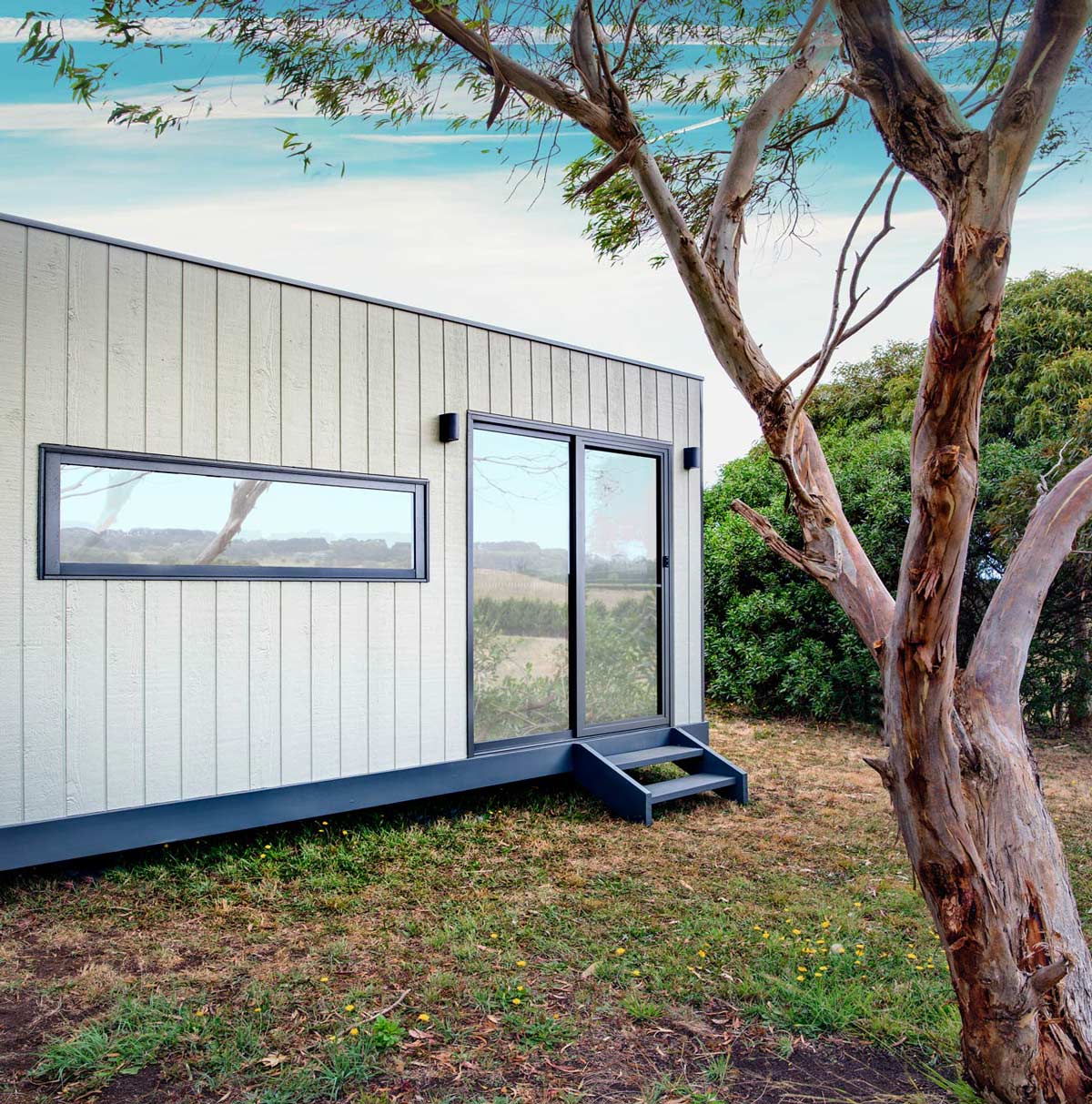One of our Directors and chief-MicroHomes builder, Hayden Le Page, recently spoke on 3AW Afternoons with Dee Dee Dunleavy about the dangers of tiny home design and the unregulated tiny homes industry.
Take a look to see their conversation on tiny home design below.
Dee Dee
You might have heard of tiny homes or it could be that you haven’t. They’re essentially houses that are built into small spaces. And some could be fully functioning houses set up in trailers or storage containers, or just on a very small area of land. There is a problem though. There’s no real standard in the tiny house building industry. Now one builder, Hayden Le Page, who’s from MicroHomes Group is highlighting what he says are the dangers of ignoring safety standards and he joins me now.
Good afternoon Hayden.
Hayden
Hey Dee Dee, how are you going?
Dee Dee
Good, thank you. So what made you start in the tiny house building sector?
Hayden
Well, I started out looking for one and when I visited a bunch of them I was just disappointed in what I saw. So what do you do as a builder? You go out and do it yourself and try to do it properly.
Dee Dee
So what are some of the dangers that you wanted to highlight?
Hayden
Okay, things like staircases with no handrails, leading up to sleeping spaces that are less than a meter high. It’s like sleeping on a shelf. Even ladders that I’ve seen screwed onto doors and walls completely vertically, it’s quite difficult to actually climb something like that to get up into bed. And then there’s other issues like composting toilets, which councils don’t often approve, non-compliant plumbing and waste systems. But the worst thing overall is the fire risk. Tiny homes have to – they’re governed by vehicle standards. And they have to be under four and a half tons, and a lot of the time to achieve that they use the lightest possible materials. Unfortunately, they’re all highly combustible. So you see a lot of the time tiny houses being built with highly combustible exterior cladding, like cedar and pine lining and timber shiplap. And then they’ve been shipped out to bushfire prone areas, and, and people are living in them, unbeknownst, what the risks are.
Dee Dee
How big is the problem then Hayden, what percentage of tiny houses would you say wouldn’t meet normal housing standards?
Hayden
An incredibly high amount, I’d say 80 to 90%. There’s – there’s myself, our company and I think there’s one other company that actually strives towards bushfire resistant tiny homes, or in our case MicroHomes, everybody else, it’s completely ignored, absolutely ignored.
Dee Dee
How could it be though, that there’s no regulation, I mean, is the industry or the need or the people wanting tiny homes, has that grown so quickly that it’s just been overlooked somehow?
Hayden
That’s it. you’ve got it in one. It’s happened so quickly. It’s happened so quickly, and the closest regulations that the tiny house builders have to build to are the vehicle standards, which are basically caravans and trailers. And they’ve got nothing about livability in them, I mean, sure, you have to, if you’re gonna register as a caravan, you have to have a gas certificate if you’re going to run gas and an electrical certificate for electrical. But as for things like ladders leading up to beds, and fire safety, waste systems, you know, toilets and drainage for all your plumbing – there’s very little regulation in any of that, if any. It’s quite surprising, because when you hear the word tiny home, you think of the home, it’s not a vehicle and they’re marketed as homes, and are marketed a lot of time by people calling themselves builders or registered builders – “Trust us we’re registered builders we’ll build your home.” – so there’s an inherent trust there that I’m buying a home built by a builder. But little do you know the only rules they have to follow are vehicle standards, and have nothing to do with the normal building code.
Dee Dee
What are the key things people should look for or ask for if they are considering buying a tiny home?
Hayden
Well, where it’s going to be, whether it’s engineered, where they’re buying the trailer from, whether the trailer is actually suitable for the structure. These are things that we’ve all addressed at MicroHomes. We manufacture the chassis, we manufacture everything all together. Whereas a lot of the time, in the tiny house world, the tiny house builders will get a trailer in from wherever they’re buying the trailer from, Jimmy’s trailers down the road, wherever it is, and they’ll put their tiny house on top of the trailer. The problem with that is that trailer is still just registered as a trailer and the tiny home is legally, from a legal standpoint, a load on the trailer. And the person responsible for the load on the trailer is the person in control of that, which is the person living in it. It’s no different as far as the law is concerned to putting a couch and a fridge in the back of your trailer tying it down and going down the freeway. You’re responsible for that load, aren’t you? So it begs the question “Who’s responsible for the longevity and safety of the tiny house?” As it turns out, it’s the person living in it because they’re in control of the load on their trailer.
Dee Dee
Isn’t that interesting.
Well, there’s certainly lots to keep in mind there. Thank you very much for joining me today builder Hayden Le Page from MicroHomes Group. Just be careful if you are looking into buying one of the tiny houses, as he’s pointed out there, there are certainly some safety issues to be looked at with some of them.

